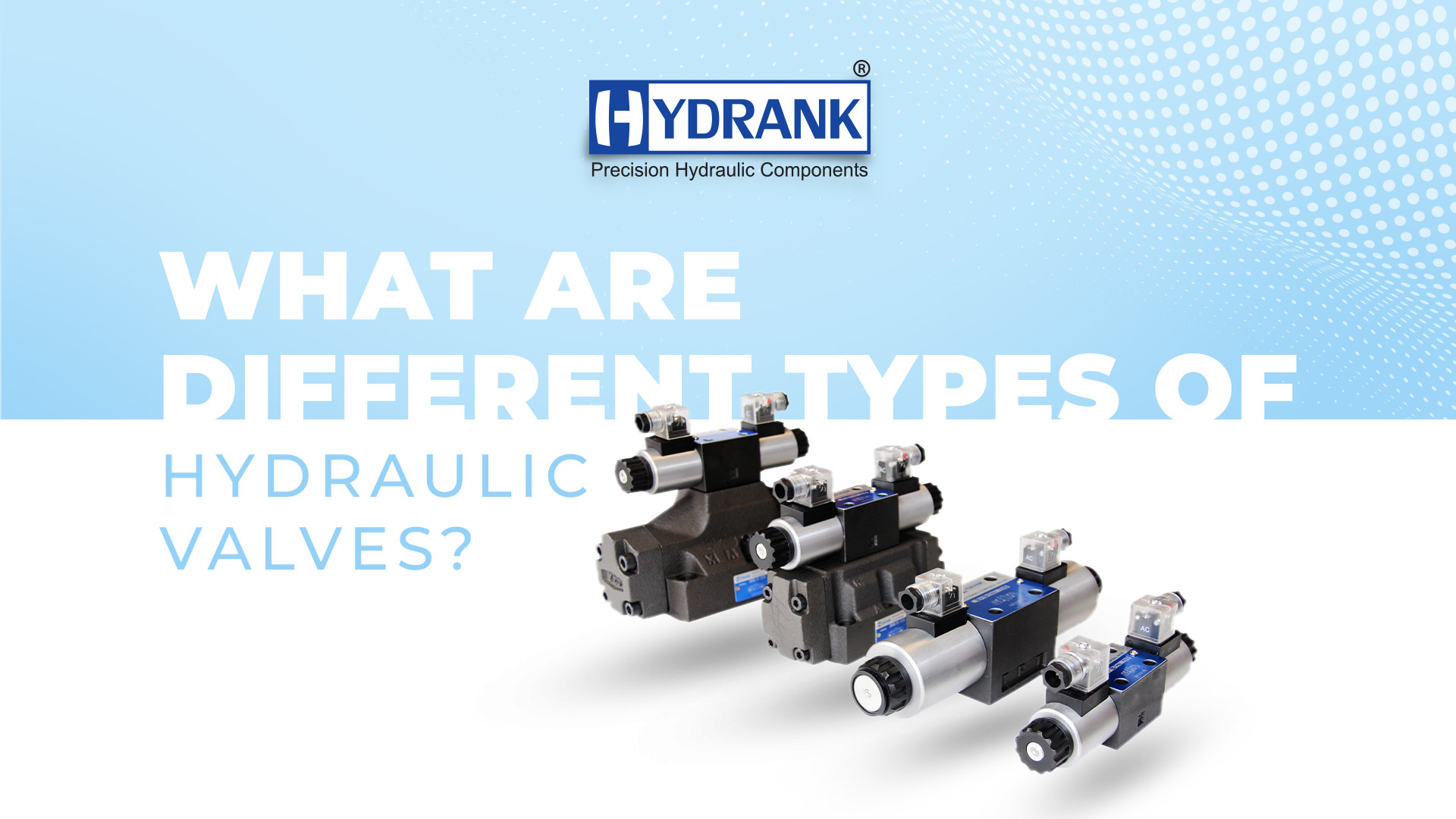-
What are The Different Types of Hydraulic Valves?

Hydraulic systems are intricate networks of components designed to transmit power using pressurized fluids. At the heart of these systems lie hydraulic valves, indispensable devices that regulate the flow and pressure of hydraulic fluids. Understanding the diverse array of hydraulic valves is crucial for optimizing the performance and safety of hydraulic systems. This comprehensive guide delves into the different types of hydraulic valves, shedding light on their functions and applications. Explore What are The Different Types of Hydraulic Valves With Shriank.
Pressure Relief Valves:
Pressure relief valves are fundamental components in hydraulic systems, tasked with preventing pressure buildup beyond safe limits. These valves open when the pressure surpasses a predetermined threshold, diverting excess fluid back to the reservoir. This mechanism safeguards the system from potential damage due to overpressure, ensuring operational stability and longevity.
Directional Control Valves:
Directional control valves dictate the direction of fluid flow within a hydraulic system, facilitating precise control over machinery movements. These valves come in various configurations, including spool, poppet, and rotary types, each suited to specific applications. By directing fluid flow to different hydraulic actuators, directional control valves enable the manipulation of equipment with accuracy and efficiency.
Flow Control Valves:
Flow control valves regulate the rate of fluid flow in hydraulic circuits, allowing for precise adjustment of actuator speed and control. These valves modulate flow by throttling or bypassing fluid, ensuring optimal performance across a range of operating conditions. Whether it’s controlling the speed of a hydraulic cylinder or maintaining uniform flow to multiple actuators, flow control valves play a crucial role in enhancing system efficiency and productivity.
Check Valves:
Check valves, also known as non-return valves, permit fluid flow in one direction while preventing reverse flow. These valves are essential for maintaining pressure integrity within hydraulic circuits and safeguarding against system contamination. Commonly found in applications such as hydraulic pumps and cylinders, check valves ensure unidirectional fluid movement, enhancing system reliability and safety.
Proportional Valves:
Proportional valves offer precise control over fluid flow and pressure by modulating their opening in proportion to an electrical or mechanical input signal. These advanced valves enable fine-tuning of hydraulic systems, allowing for smooth and accurate operation across varying loads and conditions. Proportional valves find use in applications requiring precise motion control, such as industrial automation and mobile machinery.
Solenoid Valves:
Solenoid valves utilize electromagnetic actuators to control the flow of hydraulic fluids. By energizing the solenoid coil, these valves open or close, regulating fluid flow according to system requirements. Solenoid valves are valued for their rapid response times and ability to operate remotely, making them indispensable in modern hydraulic systems.
Shriank In conclusion, the realm of hydraulic valves encompasses a diverse range of types, each serving specific functions vital to the operation of hydraulic systems. From pressure regulation to directional control and flow modulation, hydraulic valves form the backbone of machinery across industries. Understanding the characteristics and applications of different types of hydraulic valves is essential for engineers and technicians tasked with designing, maintaining, and troubleshooting hydraulic systems.
By grasping the nuances of hydraulic valve technology, professionals can optimize system performance, enhance safety, and unlock new possibilities in hydraulic power transmission.
In the dynamic landscape of hydraulic engineering, staying abreast of advancements in valve design and functionality is key to pushing the boundaries of what hydraulic systems can achieve.
India's Largest Hydraulic Vane Pump Supplier
contact us: +91 98989 09148
Delivery
Prompt and accurate delivery
Client Servicing
Pro after-sales customer support
Quality assurance
Top quality standards
Export
More then 10 countries
